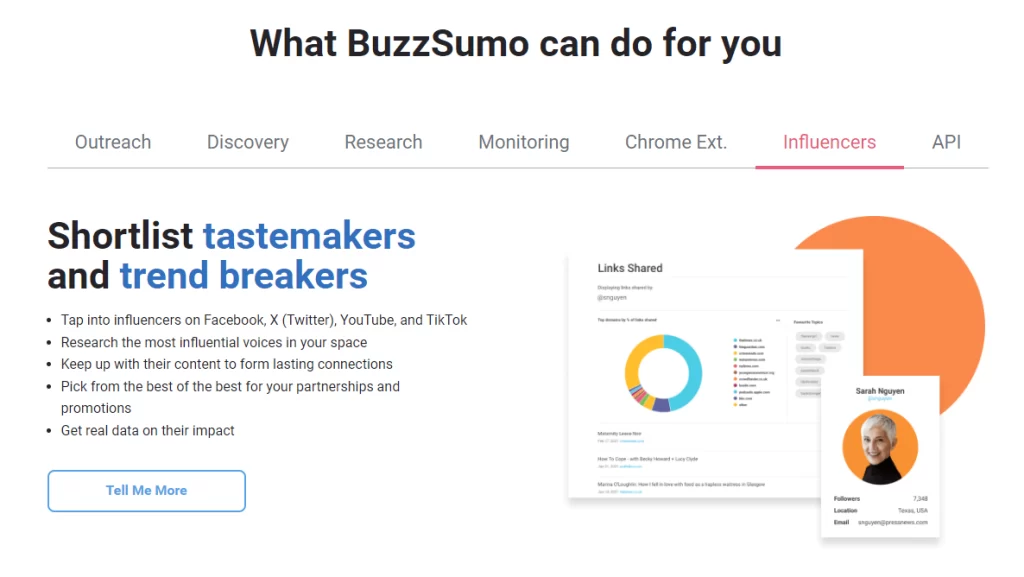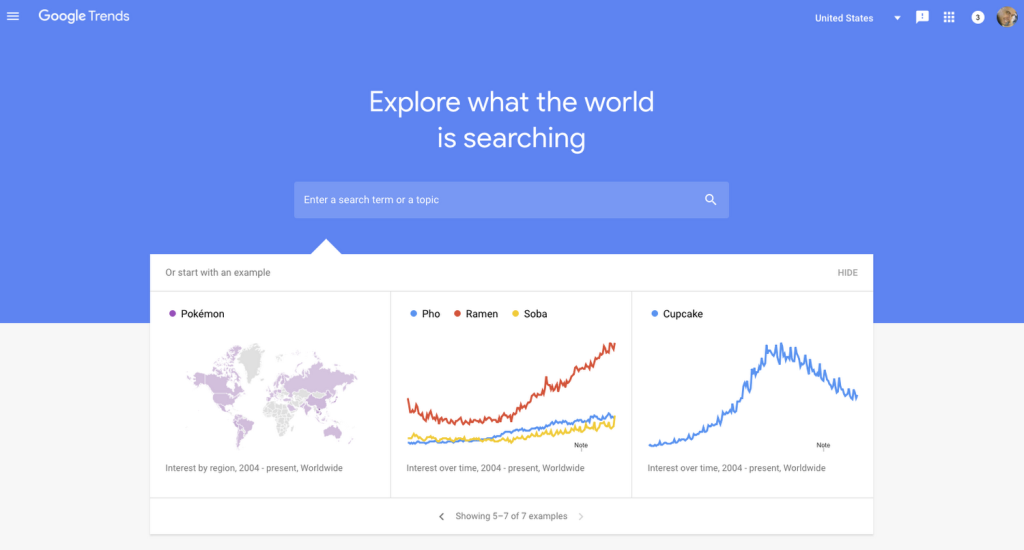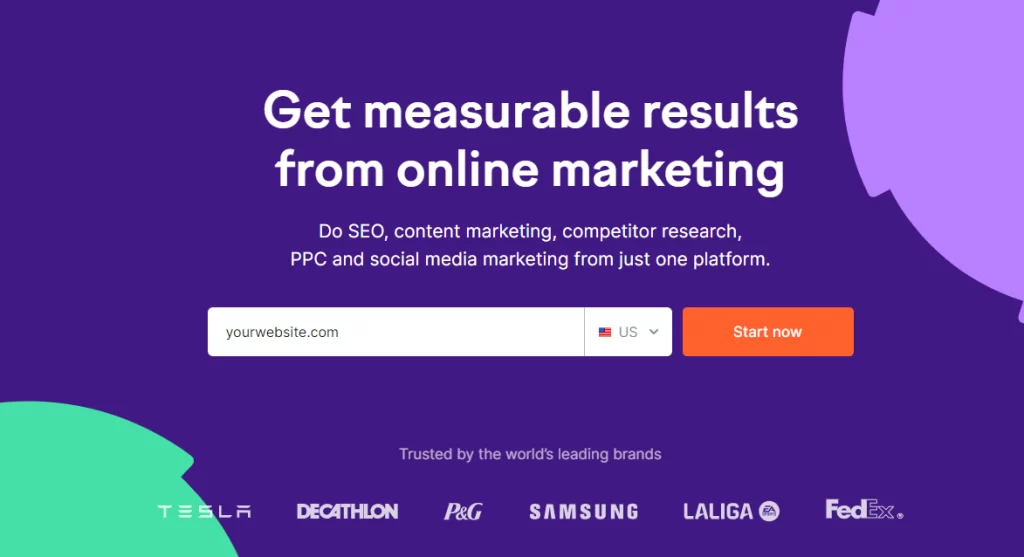What is a target audience?
Put simply, a target audience is a specific group of people that a marketing message , product, service or experience is aimed at.
It’s the group most likely to be interested in a product or service.
Specifically, a target audience is a group of people who share similar traits, like age, interests, or buying habits, making them more likely to interact with your marketing activities – that can be a social media post, a PPC campaign or an SEO strategy.
Understanding this group helps B2B or B2C businesses customise their marketing plans to better meet their needs so they can increase their website traffic or more people visiting their physical store.
Target Audience B2B Example
An example of a B2B target audience could be small tech companies with around 20-100 employees, based in your preferred location (big cities or smaller towns).
They might be a target audience that is seeking software solutions to streamline their operations or improve cybersecurity.
Understanding these specific needs helps B2B companies customise their marketing to better serve these businesses.
Why is it important to have a specific target audience in mind before implement a marketing campaign?
We alway say: go where your audience is. This means your business should be present on platforms where your target audience spends most of their time.
Understanding your audience helps you use a tone and style in your messages that they’ll relate to.
This could be platforms like Instagram if they’re into visual content, LinkedIn if they’re professionals interested in networking or optimising for search if they tend to Google keywords related to your products and services.
Being in these spaces lets you connect with them on a personal level, making it easier to understand their needs and preferences. It’s like meeting them where they feel most comfortable, which can lead to stronger relationships and better outcomes for your business.
For example, if you’re talking to tech pros, you might be more formal. If they’re younger and laid-back, you’ll keep it casual. This way, your messages are well-received and make a bigger impact.
This deeper understanding of who your ideal customers are allows you to create detailed buyer personas, which represent different segments of your audience.
Each persona guides your marketing efforts, helping you to address the specific needs, pain points, and desires of different customer groups.
How does a target audience differ from a buyer persona?
A target audience and a buyer persona are related concepts in marketing, but they serve different purposes.
A target audience and a buyer persona are related concepts in marketing, but they serve different purposes:
Target Audience
- A target audience is a broader group of people who are the intended recipients of a marketing message or campaign.
- It focuses on a larger number of individuals who have things in common, such as demographics (age, gender, income, location) or have similar lifestyles.
Buying Persona
- A buyer persona, on the other hand, is a more specific representation of an ideal customer within the target audience.
- It’s a specific group that gives you deeper insights into how they interact with businesses like yours, focusing on their buying habits and spending budgets.
How to find your target audience?
Defining your target audience involves getting up close and personal with the people who are most likely to be interested in what you have to offer.
It starts with really getting to know them – understanding not just their basic demographics like age and location, but also what makes them tick on a deeper level.
This personal connection extends to identifying their needs and pain points. What problems are they trying to solve? What frustrations do they encounter in their daily lives or businesses? By pinpointing these pain points, you can position your products or services as the their solution.
Customer feedback is also something you need to take into consideration when defining your target audience. Your customers are constantly communicating how they feel when they interact with you – pay attention to how they speak to you, if they leave reviews about your business online, if they interact with you on social media and if you get referrals.
These details will help you find whey they like and what they don’t, so you know exactly what to improve.

Target Audience Examples
Different sectors, from fitness to technology, have their own unique groups of consumers with specific interests and needs.
Let’s look at different target audiences from 7 industries – this will help you dive deeper into your own business and create various buying personas.
Healthcare Industry
- Seniors – looking for medical services, products, information related to managing chronic conditions
- Young people – looking for mental health support, supplements, information related to specific conditions
- Caregivers – looking for resources, and assistance in managing caregiving responsibilities.
Travel Industry
- Solo travellers – interested in safe locations, affordable accommodations, solo activities, cheap flights
- Adventure Seekers – looking for outdoor activities, information and company reviews who provide specific activities
- Families – interested in locations that provide activities for children, safe accommodation, family holiday packages, all inclusive offers etc
Buying Persona example: Caregiver, age 30-45, located in London, trying to find tools/resources/platforms that can make their job easier to manage, they find the healthcare system difficult to navigate, extensive knowledge about medications, healthcare expenses, home modifications.
- Caregiver’s Toolkit: An interactive online platform providing customisable templates for medication logs, appointment calendars, and caregiver schedules.
- Home Safety Checklist: A downloadable checklist to assess the safety of the caregiver’s home environment and identify areas for improvement.
Products/Services this target audience might be interested in:
- Counselling services specialising in caregiver stress management, coping strategies, and family dynamics
- Books, guides, and manuals offering practical advice and tips for caregivers on various aspects of caregiving.
- Pill organisers and dispensers to help manage multiple medications and doses.
- Wearable devices with health monitoring features to track vital signs and provide real-time alerts in case of emergencies.
Content Plan based on this buying persona
- Q&A Sessions with Healthcare Experts: Live virtual sessions where caregivers can ask questions and get personalised advice from professionals.
- Testimonials from caregivers in London sharing their experiences with different resources and platforms that have helped them manage their caregiving responsibilities.
Food and Beverage Industry
- Health-conscious consumers – looking for organic food/drink choices, focusing on clean eating and lifestyle
- Foodies – individuals who are willing to explore different cuisines, exotic recipes, new beverages who are more likely to share feedback/reviews online and might be more interested in following your brand on social media or look you up on Google
Fashion & Beauty E-commerce/Brands
- Trend-conscious – looking for products/services that have gone viral on social media (TikTok has a massive impact on what goes viral)
- Luxury shoppers – interested in high-end designers, exclusive experiences, etc
Tech Industry
- Tech-savvy – interested in the latest trends, using specific terminology when looking up products/services, more likely to be interested in reviews and product comparisons
- Early adopters – interested in anything tech only if it’s something going viral, look up for specific generic keywords on Google Trends to get an idea of what’s trending in this industry when producing content
Target Audience Tools
If you are having a hard time trying to identify your target audience, there are some great tools that you can use.
A popular online tool used for content discovery, content research, and social media analytics. It allows users to analyze what content performs best for any topic or competitor across various social media platforms

Google Trends is a free online tool provided by Google that allows users to explore the popularity of search queries over time and across different regions. It provides valuable insights into the relative interest and volume of searches for specific topics, keywords, or phrases on Google’s search engine.

SEMrush is an all-in-one digital marketing platform that provides a wide range of tools and features to help businesses improve their online visibility, optimise their digital marketing efforts, and outperform their competitors. It offers comprehensive solutions for search engine optimisation (SEO), pay-per-click (PPC) advertising, content marketing, social media management, and competitive research.









